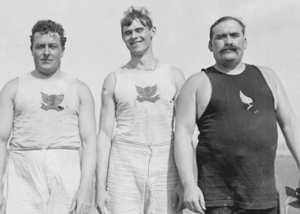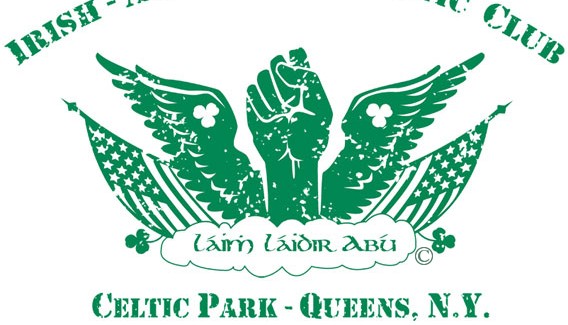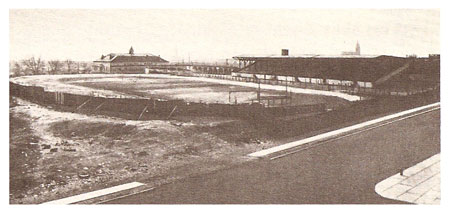Happy St. Patrick's Day
The following is a repost of a story written last year for my former blog, tracksuperfan.com. (Image by WingedFist.org)
Today is St. Patrick’s Day, which makes it a perfect day to celebrate track and field (just like the other 364 days of the year). How so?
From what I read, St. Patrick’s Day really isn’t a major observance in Ireland. Only in the USA is it a big deal as a celebration of Irish culture and heritage, a product of the mass Irish immigration to this country and the efforts they made to maintain their ties to each other and their history.
So what does that have to do with track and field?
In recent decades, the biggest connection between our sport and Irish-American culture has been the pipeline of Irish middle-distance runners in the NCAA, especially Villanova. The Villanova Running blog has ranked the top five Irish/Wildcat runners of all time — four of which were Olympic or World champions.
If we turn back the clock an entire century, though, the connection was obvious. Back then, track clubs dominated the domestic scene, and none more than the Irish-American Athletic Club.
 The IAAC was formed in 1897 or 1898 (depending on your source) and chose the “Winged Fist” as its emblem. The Irish “Láim Láidir Abú” translates to “A strong hand will be victorious”. While the team was strong, contributing 54 Olympic medals to the US totals and winning ten national AAU team titles between 1904 and 1916, perhaps their greatest achievement was the creation of Celtic Park.
The IAAC was formed in 1897 or 1898 (depending on your source) and chose the “Winged Fist” as its emblem. The Irish “Láim Láidir Abú” translates to “A strong hand will be victorious”. While the team was strong, contributing 54 Olympic medals to the US totals and winning ten national AAU team titles between 1904 and 1916, perhaps their greatest achievement was the creation of Celtic Park.
 The most prominent athletes in the IAAC were a group of throwers known as the “Irish Whales“, a group who utterly dominated the hammer throw and shot put on both the domestic and international level. A look at the photo easily explains the the phrase. Not all were members of the IAAC; some were members of the rival New York Athletic Club. Most were employed as New York City policemen, as were many of their Irish-American brethren.
The most prominent athletes in the IAAC were a group of throwers known as the “Irish Whales“, a group who utterly dominated the hammer throw and shot put on both the domestic and international level. A look at the photo easily explains the the phrase. Not all were members of the IAAC; some were members of the rival New York Athletic Club. Most were employed as New York City policemen, as were many of their Irish-American brethren.
One of the reasons the IAAC was so dominant a club is that they were inclusive on a level that was more or less unprecedented in its day. The heart of the team was of Irish heritage, but they recruited and accepted athletes based on their abilities rather than their ethnicity. Many Jewish athletes were members, including Myer Prinstein and Abel Kiviat. Blacks were welcome too; John Baxter Taylor, Jr, the first African-American Olympic gold medalist, was a member. Compared to the New York Athletic Club, which still had a ban against Jewish and black membership into the 1960s, the IAAC was unusually progressive.
One of the club’s biggest moments was its last. From Wikipedia:
Before the largest crowd that had ever assembled to see a track meet in the United States, on September 9, 1916, the Irish American Athletic Club defeated the New York Athletic Club at the Amateur Athletic Union’s National Championships, by a score of 38 to 27. Before a crowd of 30,000 spectators at Newark, New Jersey’s Weequahic Park, the Irish-American Athletic Club won what would be their last national championship title. The club disbanded a year later, when the U.S. became a combatant in the First World War.
One of the bigger St. Patrick’s Day traditions is wearing your green. You could go the way of Hockey Night in Canada‘s Don Cherry:

(image by Don We Now Our Gay Apparel)
Or, if you don’t want to blow your entire retirement fund on one outfit, you could get yourself some Irish-American Athletic Club wear from the Winged Fist’s store at Cafe Press. Simple, (relatively) tasteful, inexpensive, and all about Irish-American history and track and field.
 So when you’re out and downing your Guinness, remember how you’re not just celebrating Irish-American culture and history, but celebrating the history of track and field. And next year I’ll tell you how Guinness is wrapped up in track and field as well.
So when you’re out and downing your Guinness, remember how you’re not just celebrating Irish-American culture and history, but celebrating the history of track and field. And next year I’ll tell you how Guinness is wrapped up in track and field as well.


















Submit a Comment